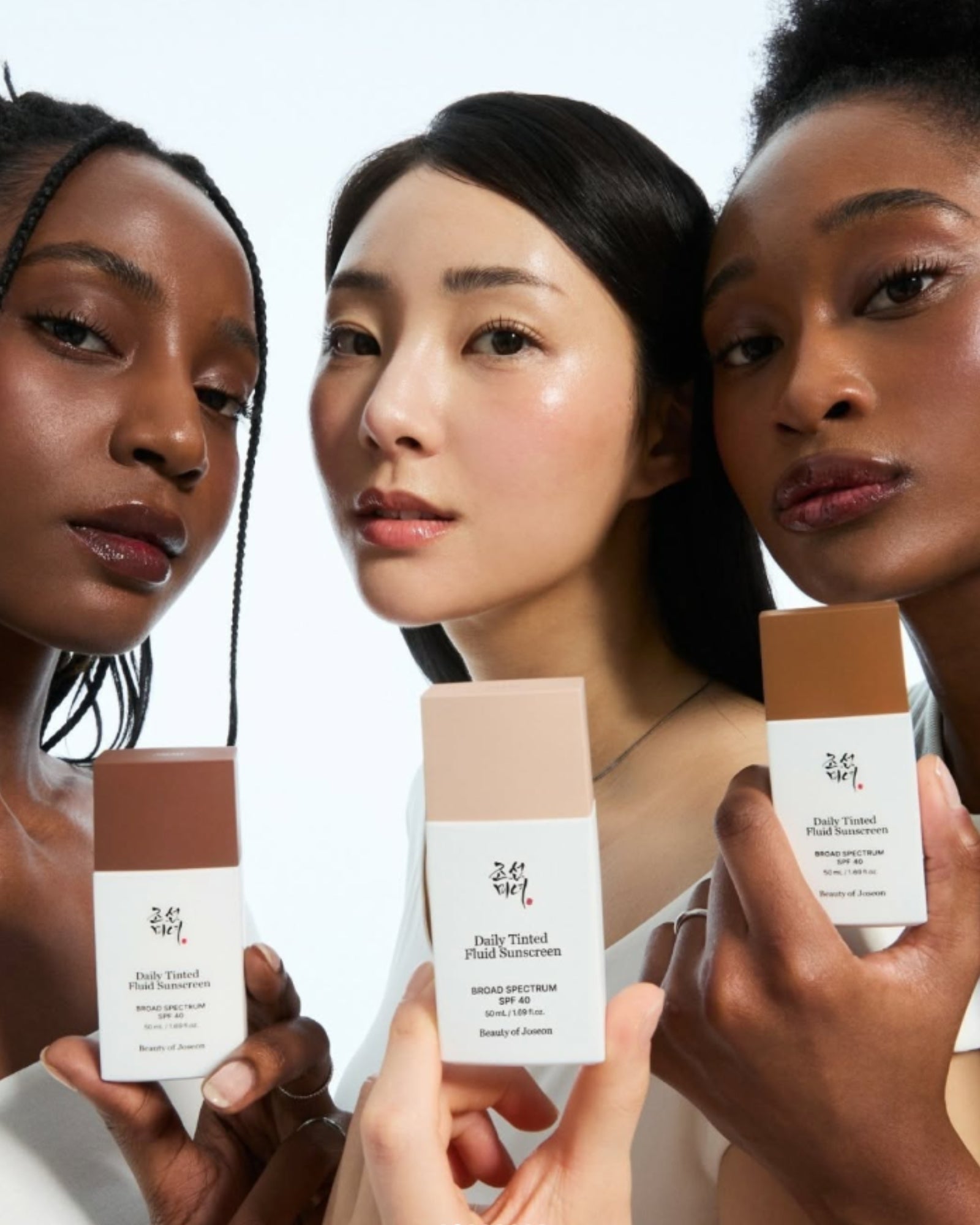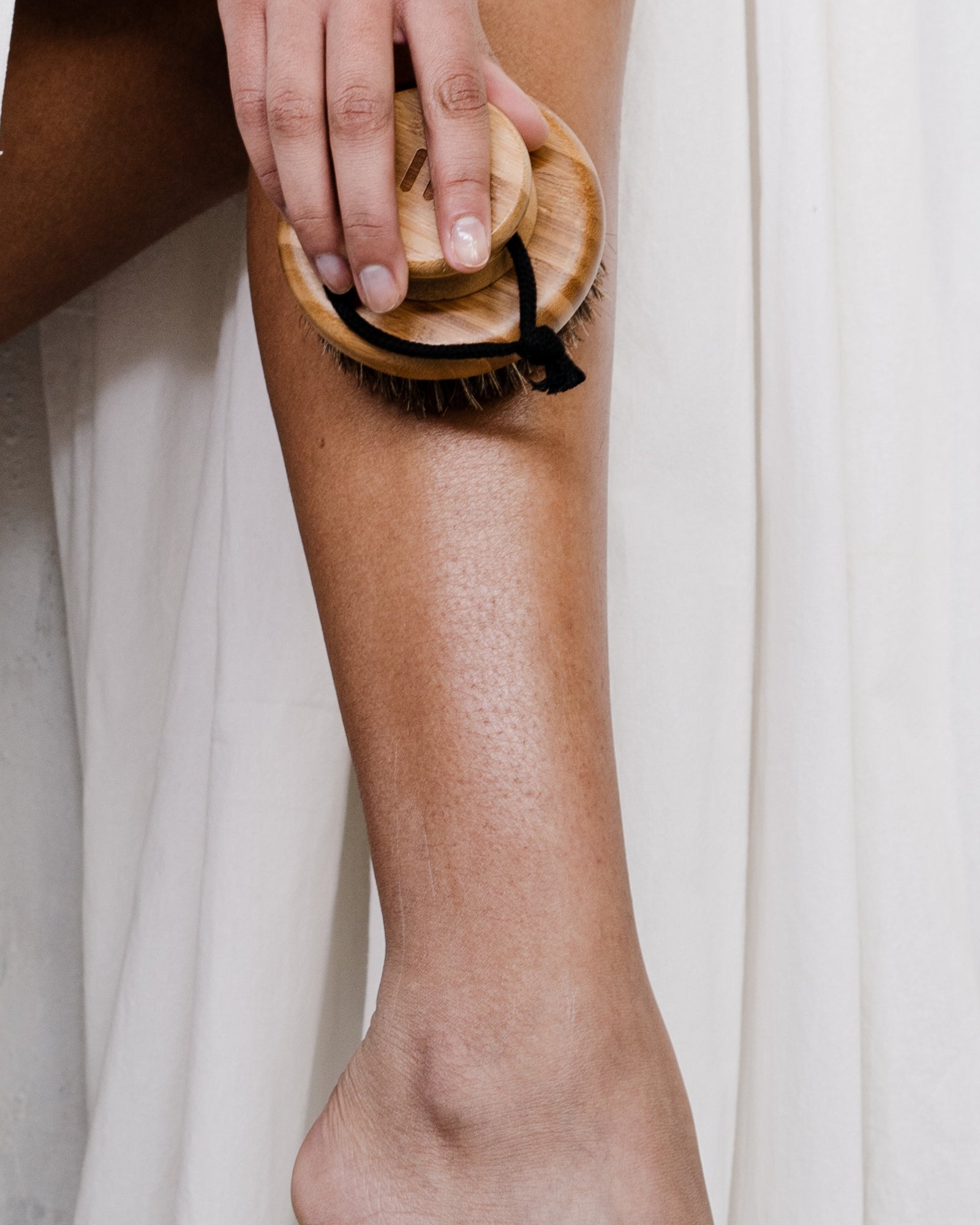Your Cart is Empty
Menu

What Skin Type Do I Have? Take Our Quiz!

If you're new to building a skincare routine, where do you start? Knowing your basic skin type can help, especially before delving into more specialized treatments. Here's an easy quiz to help decipher your skin type!

Scroll down to read about your skin type.
Balanced (normal) skin
This refers to generally healthy skin is whose pH and sebum production is in equilibrium. The T-zone (forehead, chin and nose) may be a bit oily, but overall, the skin is neither too oily nor too dry. This skin type isn't generally prone to sensitivity either, although it's normal for skin to become dryer with age. We prefer to call this skin type 'balance' rather than 'normal', because it's actually anything BUT normal. Most of us will enjoy balanced skin every now and then, but the skin is a living breathing organ, prone to change and affected by a plethora of conditions including the environment, stress, lifestyle factors, genetics, medication, hormones...the list goes on.
Those lucky enough to have balanced skin enjoy:
-
No blemishes;
-
Fine, small pores;
-
Even skin tone;
-
Good blood circulation;
-
A strong skin barrier that handles irritants well.
Basically, it's skin goals! To help maintain balanced skin, keep a simple routine. A gentle cleanser always works best. There's no need to use thick creams, but consider a serum for additional antioxidant protection and to protect the quality of your skin through the years. And as always, wear SPF (the sunscreen rule applies to ALL skin types). Nothing more to do here. Keep doing what you're doing.
Dry skin
Dry skin typically produces less sebum than other skin types, and includes slightly parched to atopic skin. As a result, it lacks the lipids required toretain moisture and build a protective shield against external influences. Those with dry skin tend to have one or more of the following characteristics to varying degrees:
-
Tightness and pulling, especially after cleansing;
-
Rough and uneven texture;
-
Dull complexion;
-
Scaling, flaking and itchiness;
-
Redness and irritation;
-
Small pores;
-
Tendency towards chapping and cracking and fine lines.
Oily skin
This skin type has the opposite issue to dry skin: it produces too much sebum! People with oily skin are generally:
-
More prone to various forms of acne, especially in the T- Zone;
-
Battling larger, more visible pores;
- Bestowed with plumper, shinier skin (the flip side of oily skin).
What you should do: To counteract excessively oily skin, people naturally reach for harsh, drying skincare - particularly if acne is a concern. However, this could be counter-productive as sebum production can go into overdrive to compensate! pH-balancing toners are useful to return your skin back to equilibrium after an acne or oil-targeting cleanser. Exfoliation is beneficial, but keep away from overuse. And as always, moisturize regularly to keep your skin hydrated and to keep it from overproducing sebum. A lightweight, water-based moisturizer is your best bet. Shop all the best products for oily skin here.
Combination skin
Combination skin is, as the name suggests, skin that has both oily and dry patches. Generally, the T-Zone is oily while the cheeks tend to be dry. Combination skin is usually prone to:
-
Acne and congestion on the T-Zone;
-
Mouth, eyes, and cheeks may have dry or normal skin
-
Enlarged pores around chin, nose and forehead
-
Sensitivity; and
- Dry skin around the eyes, upper lip and cheeks.
What you should do:If you have combination skin, you may need to segment your skin care, by using more emollient products on the dry areas, while treating the oily areas with lightweight and sebum-absorbing product. This is where layering skincare comes in handy. There's also a range of products designed for combination skin - we've gathered it in the one spot for you here.
Sensitive skin
If you have sensitive skin, you could experience burning, itching, sore and red skin that may also feel quite rough to the touch. Other signs include:
-
Poor reaction to products, including itchiness and blotches;
-
Stinging, flushing and dryness;
-
Heated skin; and
-
Uneven texture.
The best way of caring for sensitive skin is to be gentle and patient. Focus on rebuilding your skin barrier, and avoid anything that might be potentially irritating such as fragrances, drying alcohols, dyes and chemicals. Conducting a patch test is mandatory if you want to avoid your skin from reacting. Keep the routine simple, by using a mild cleanser, moisturiser and sunscreen. You can browse our recommended products for a compromised skin barrier here, for rosacea here or more generally, sensitive skin products here.
So how do we know if we're still not sure? And when's the best time to check?
Take the sage advice of 'The Korean Skincare Bible' by Lilin Yang, Leah Ganse and Sara Jimenez. Wash your face as per usual. When you're done, do not apply any products onto your face, wait for about an hour and let your skin settle naturally. Check again in the mirror and examine your skin. Shiny or greasy skin points to oily skin. If that is concentrated only in the T-Zone, it's most likely combination. If your skin feels uncomfortably tight and dry, then you most likely have dry (or dehydrated) skin.
Check out our info-graph below:

We hope this helps simplify the process of understanding your skin and how you can better care for it. Remember, everyone is different, and throughout our lives we can experience a variety of skin types - sometimes simultaneously! Your skin communicates through reactions, so take notice of what it likes and what it doesn't, and be kind to it.
XOXO
Kanvas Beauty
_____
Sources:
-
https://skinkraft.com/blogs/articles/different-skin-types-how-to-know-your-skin-type
-
The Korean Skincare Bible- The ultimate guide to K-beauty secrets by Lilin Yang, Leah Ganse and Sara Jimenez
2 Responses
Janice holt
February 12, 2025
Hi, can you tell me which products I should purchase. I am 64 sensitive combination skin. I love Korean products but would like professional advice please.
Leave a comment
Comments will be approved before showing up.
Also in Kanvas Kult Blog

Beauty of Joseon Daily Tinted Fluid Sunscreen Review
by Kanvas Beauty February 13, 2025 5 min read
Our honest Beauty of Joseon Daily Tinted Fluid Sunscreen Review.
Shields like SPF, looks like tint, feels like skincare. That's the tagline of Beauty of Joseon's new Skin Tints and ahhh it sounds so good! We were lucky enough to receive promotional samples from the brand, and here's what we thought (TDLR; it's freaking amazing and we can't wait to stock it).

My Axiology Fungdation Review (with swatches)
by Kanvas Beauty February 11, 2025 5 min read
An honest Axiology Foundation Review.
We saw the promo for Axiology's new mushroom-infused foundation. It's called Fungdation and it looked so good! Kellie couldn't wait to try it. Here's what she thought, as well as pics on how it looks on the skin. TLDR; it isn't for everyone, but which foundation is? If your skin type and texture preference matches the Fungdation profile, you'll never look back.

How to get rid of Strawberry Skin on legs
by Kanvas Beauty January 29, 2025 5 min read
Got Strawberry Skin on your arms and legs?
Harmless but annoying, 'strawberry skin' usually arises after shaving or some form of hair removal that exposes the hair follicle or a clogged pore to oxidization (thereby turning it dark). It could also be an excess buildup of skin or keratin around the hair follicle (i.e. keratosis pilaris).Honing in on what triggers it for you is the key to preventing it in the future - along with the right skincare routine.
BROKE AF!? WANT $20 OFF YOUR FIRST ORDER?
BECOME A KULT MEMBER AND JOIN THE PINK SIDE
💗
Join us for even more rewards, discounts, freebies and a special surprise on your birthday!

Kanvas Beauty
February 12, 2025
JANICE HOLT We can help! Feel free to book in a time with us to chat on the link below, or simply email us at hellokanvasbeauty.com.au
https://www.kanvasbeauty.com.au/pages/skin-consultation